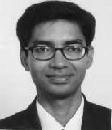


Quantitative Geomorphology Research Group (QGRG)
Systems Science and Informatics Unit (SSIU)
(Computer and Communication Sciences Division (CCSD))
INDIAN STATISTICAL INSTITUTE
Bangalore Centre
Availability of data—for natural, anthropogenic, and socio-economic studies — from a wide range of sources—with numerous spatial (from atomic to cosmological scales) and temporal resolutions—and a variety of formats, opens new horizons to the quantitative geomorphology research community. QGRG's challenges include precise retrieval of geomorphologically relevant information, which supposes to segment the data in homogenous zones according to some criteria. This often implies filtering steps. The studies in this group aim to borrow methodologies from various sources (e.g. mathematical morphology, pattern theory, random sets, geostatistics, fractal geometry). Among the methods, mathematical morphology (Matheron 1975, Serra 1982) deserves a special mention because it stems from set-descriptors, which have been extended to functions and partitions.
Quantitative Geomorphologic Research Group (QGRG): Data related to various natural, anthropogenic and socio-economic phenomena are now available in numerous formats, most significant of which is spatial data that facilitate visualization at spatio-temporal intervals. Availability of such data from a wide range of sources in a variety of formats poses challenges to Spatial Information Science community. It is recently mentioned that such data that are being acquired with huge expenditure are being underutilized. The utility and application of such data could be substantially enhanced through developments in technologies related to: (i) Retrieval: Retrieval of noise-free information in the forms of themes (layers) from data requires robust image processing, spatial information theory techniques; (ii) Analysis: Once theme-specific layered information is retrieved, techniques are required to analyse themes; (iii) Reasoning: Theme specific layered information need to be integrated via spatial relationships and reasoning. Certain map algebraic concepts are of use; (iv) Modelling: Spatio-temporal behaviour of a phenomenon needs to be visualized. As it stands, there are various techniques (e.g. mathematical morphology and map algebra) to address the challenges.